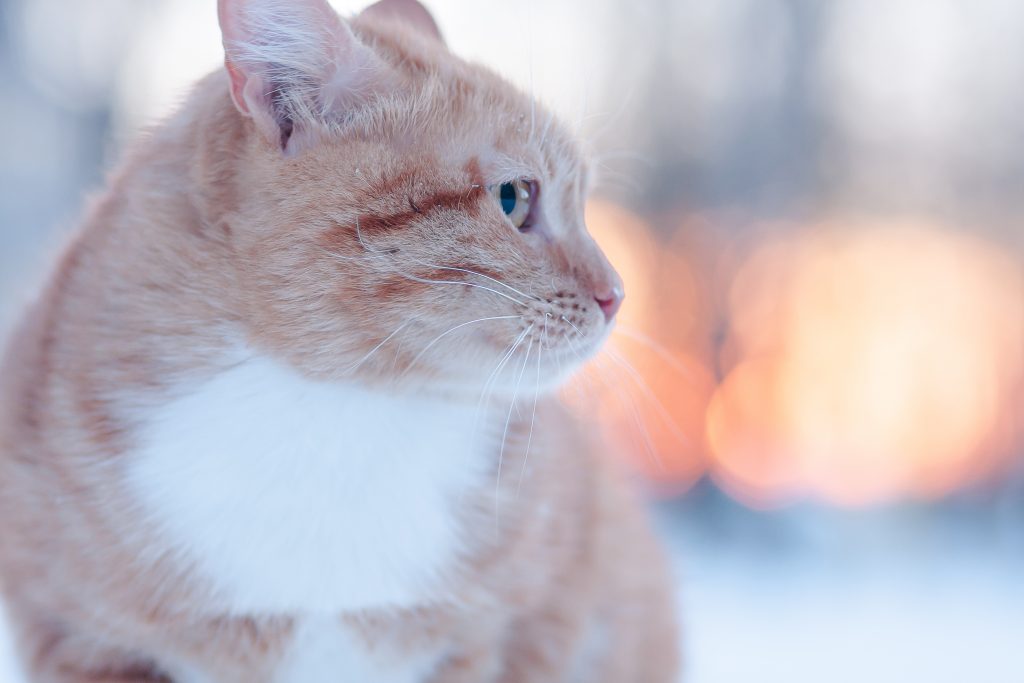When I was four, my mom and I walked to the bus stop every day to pick up my brother from school. One day, a tiny black and white cat followed us home. “Don’t feed her, or pet her, or she will never go home”.
After a few more weeks of following us home, it became clear she did not have a home. One day she came meowing at my back door. My parents were downstairs and my brother and I, promptly remembering my mother’s advice, let the cat in and fed her. She never did leave.
Her name was Scruffy. Our outdoor-indoor cat. A few years later Sylvester came along, much in the same fashion (my brother and I learned that feeding strays meant we got a new pet!). Our second, outdoor-indoor cat. Growing up with outdoor cats, I learned about the additional risks and worries involved with this lifestyle. Now as a member or a veterinary team, I know even more. I had an incredible childhood growing up in my large backyard with my furry felines watching over me. I was fortunate they remained healthy and happy. I write this blog in the hopes that other outdoor cat owners can have the same memories.
My outdoor cats were very smart. They knew to come in before bed each night. They knew food, water and warmth were always waiting for them inside. Some nights we had to stay up late to make sure they came in; but we did, so they did not have to brave the cold or fight with raccoons. We checked the weather diligently; if there was a storm coming, they stayed inside despite their protests. On these days it was extra important to burn off their pent up energy with toys and cuddles.
We monitored what our cats were eating. They refused to use a litterbox, so their urination and defecation habits were a mystery to us. These two habits tell a veterinarian a lot about their health. So we did other things to make sure we were preventatively taking care of them. We gave them both dry and wet food. We took them to the vet for annual exams and when they were sick. We dewormed and did flea prevention regularly. For an outdoor cat, this must be done monthly. Especially with kids in the house who are at risk of picking up some of the parasites cats can get from eating fleas, bugs, and other critters outside. Sometimes if we missed a dose of parasite control we would see things that looked like white grains of rice stuck to one of our cats’ fluffy behinds; an indicator of tapeworm.
We were very fortunate with our cats. Wildlife threats such as foxes or raccoons never did any damage a Vet visit and extra cuddles could not fix. Scruffy was involved in more than one car accident, however, she always walked away without any broken bones or serious scraps. Outdoor cats definitely need 9 lives. After the 4th cat accident, we attempted to keep our cats inside. Our parents, very understandably, did not want their kid’s first pets to pass away so traumatically. Scruffy and Sylvester would not be tamed though. They would not eat, sleep, or use the litterbox. After 3 days, fearing for their health, we let them out. They ate their food immediately after being released and ran to the woods to relieve themselves. It is clearly their choice to be outdoor animals, and as their humans we do our best to accommodate them.
Having indoor cats as an adult, I do sleep a little easier. I loved my cats growing up, and I see many wild spirits like theirs come through our clinic doors every day. I recommend breakaway identification collars and microchipping in case they ever wander too far. I am sending wishes for healthy, happy, long and well cared for lives for all cats, both indoor and outdoor, just like those two black and white cats that followed me home as a kid.
Written by Makayla Mosher, Veterinary Assistant




